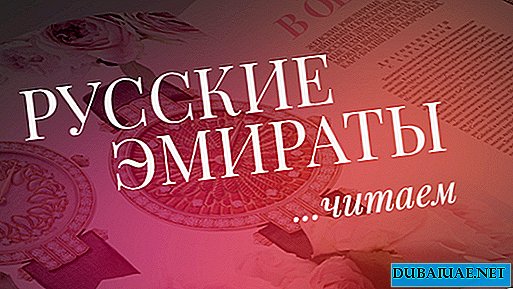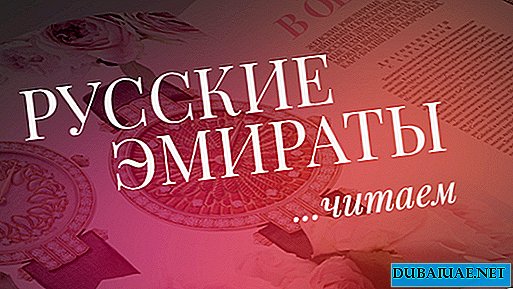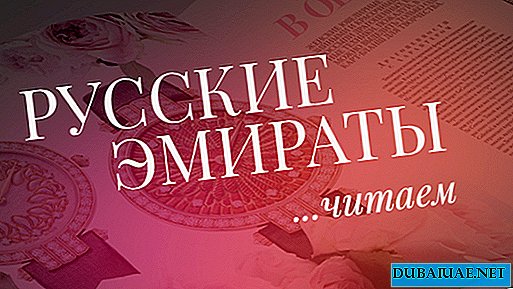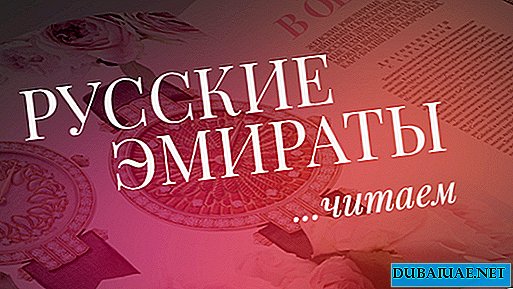Gabriel Chanel. “L'Allure de Chanel”, Paul Moran (Hermann Publishing, Paris 1976)
"It was the Russians who always taught women that there was nothing shameful in work. My Grand Duchesses knitted very well."
Gabriel Chanel. Chanel Solitaire, Claude Delay (Gallimard, 1963)
I am fascinated by Russians
Gabriel Chanel: “Someone said that“ there should be Romanians in the life of every woman. ”I would add that any native of the West should do everything possible to understand what“ Slavic charm ”is. I was simply fascinated by the Russians "Their eternal" all mine is yours "is simply intoxicating. All Slavs possess some amazing distinctive features, while remaining absolutely natural, and even the most modest of them does not look ordinary."
After the Great October Socialist Revolution of 1917, many Russians came to Paris, which became the "capital of Russia" abroad. Grand Duke Dmitry Pavlovich (1981 - 1942) first met Gabriel Chanel in the opera. Then Martha Daveli sang in Biarritz. For almost two years, from 1920 to 1922, Grand Duke Dmitry Pavlovich courted Gabriel, whom he was passionately in love with. Coco translated his feelings into the language of fashion, and in her collections she began to feel a clear "Russian accent." These were the times of her famous villa “Bel Respiro” in Garchez, where Grand Duke Dmitry and composer Igor Stravinsky lived with his wife and children ... Another Gabriel villa, Villa Larralde in Biarritz, went down in the history of CHANEL House as a place where in 1915 he was created.
A few words should be said about the Grand Duke Dmitry Pavlovich. He was a cousin of the last Russian emperor Nicholas II. On suspicion of the murder of Grigory Rasputin, Prince Dmitry was exiled to Persia, which saved him from the 1917 revolution. "Elegant and charm-filled, Dmitry was a favorite of Tsarina Alexandra Fedorovna, who was very amused by his stories and jokes. Until that fateful day, when he was accused of complicity in the murder of the monk Rasputin, Dmitry enjoyed the undivided trust of the Empress. Prince Dmitry was sent to the" link "to Persia, where at that time Russian troops fought led by General Baratov. This allowed Dmitry not to fall into the epicenter of the revolutionary events of 1917," wrote Pierre Galant.
 CHANEL and Russia. The first chapter of the relationship
CHANEL and Russia. The first chapter of the relationship
In 1921, a new page was opened in the history of CHANEL House. And she was connected with Russia. Mademoiselle Chanel, in love with Grand Duke Dmitry, meets his sister, Grand Duchess Maria Pavlovna. The princess, accustomed to work from childhood, opens in Paris her own embroidery workshop, which gives the name KITMIR. Craftswoman embroiderers carry out exclusive orders of the CHANEL House for several years, even after the relationship between Coco and Dmitry was finally broken in 1922.
Chance meeting
Fascinated by the strong character of the trendsetter of French fashion, her imagination and entrepreneurial spirit, Grand Duchess Maria often looked at Coco in the studio to watch her work. In her Memoirs, she writes that her "meetings with Mademoiselle Chanel, in which she immediately discerned the innovator and revolutionary, were filled with incredible vitality."
Once, in 1921, Grand Duchess Maria Pavlovna became a witness to a dispute between Coco and one of her embroiderers, whom the couturier blamed for exorbitantly high prices for embroidery. At that moment, Maria Pavlovna, without thinking at all, suddenly offers Gabrielle her services. Distracted from the skirmish, Gabriel, surprisingly, agrees to accept this proposal. Maria Pavlovna, hiding her real name, goes to buy sewing and embroidery machines. Soon, in the middle of her own living room, she begins to carry out the first embroideries commissioned by the CHANEL House. A little later, the Grand Duchess hires Russian girls who emigrated to France, and buys new equipment.
Grand Duchess Maria Pavlovna could spend hours in conversations with Coco Chanel, who constantly talked about her ideas and dreams. All sketches of future embroideries were first sent to Mademoiselle Chanel for approval, then they were carefully and carefully worked out for a long time before being put to work. Almost daily, Maria Pavlovna went to Coco’s workshop to observe the creative genius of the great Chanel. And finally, on the day the first collection was shown, Grand Duchess Maria Pavlovna, standing on the top step of the famous staircase in Rue Cambon, watched with great admiration for the embodiment of all the couturier's desires and how embroideries look impressive on all models.
Possessing an amazing flair for Coco Chanel, she immediately noted the great success of embroideries in her collection, and the crumbling orders after that once again confirmed her confidence. Overwhelmed with work, the Grand Duchess worked almost without rest. The next collection of CHANEL House was even more successful. Pursued by CHANEL fans who demanded their embroideries, Grand Duchess Maria Pavlovna was often forced to hide in a huge closet in her studio to avoid meetings with especially demanding ones ...
Inspiration
Under the influence of feelings for Grand Duke Dmitry Pavlovich, Gabriel Chanel "took" several ideas from her lover's wardrobe. So in her collection appeared tunics, coats with fur collars, as well as a new interpretation of the Russian shirt with embroidery, which Coco turned into an elegant women's blouse. All embroideries were also very “Russian,” but Grand Duchess Maria Pavlovna noted other sources of inspiration - oriental carpets, Persian tiles, Chinese porcelain vases and even Coptic fabrics and Indian jewelry (necklaces and bracelets) that she and her craftswomen embroidered in the style of “trompe l'oeil” (optical illusions).
In her memoirs, Grand Duchess Maria Pavlovna talks about how Coco Chanel completely changed her style, urging the princess to abandon the ascetic wardrobe of a man "in exile", in favor of a more suitable one. Mademoiselle Chanel herself picked out the outfits and makeup of Maria Pavlovna and directed every action and act of the princess, once influencing even her decision to cut her hair.
Success was the envy of other fashion houses in Paris. Numerous orders for embroidery poured, and Maria Pavlovna decided to expand her activities. This offended Gabriel, and she immediately forbade the Grand Duchess from appearing in her studio. After such a sharp denial of access, Maria Pavlovna found it impossible for herself to satisfy Coco's further expectations. On this their collaboration ended. In 1927, Grand Duchess Maria Pavlovna sold her business to Hurel, which to this day remains a supplier of fabrics and embroideries for the CHANEL House.
 Other Russians
Other Russians
Other Russian émigrés, whom the Grand Duke Dmitry Pavlovich introduced to her, had a huge impact on the life and work of the unforgettable Coco Chanel. For example, Prince Sergey Kutuzov, who became the personal secretary of Mademoiselle Chanel in 1922 and headed the CHANEL salons until 1933, and in 1934 he was appointed director of Couture House - 31 rue Cambon. Gabriel’s deep affection and the highest degree of trust in Prince Kutuzov is illustrated by Michael once entrusted with the search for a jewelry box with Coco, which she forgot on board during a cruise with the Duke of Wensminster.
There were those who were hired as fashion models in the 1920s, and were just fans of the CHANEL House. Among them we can mention such names as Galya Bagenova, Tatyana Korenoff, Mona Zabotkina, Maria Eristoff, Melita Zelinsky and Natalie Obolenskaya ...
Coco Chanel, thanks to his girlfriend, a native of Poland, Misia Sert, met Sergey Diaghilev in 1920 and fell in love with Russian ballet so much that she decided to provide financial assistance to the troupe. With her support, Igor Stravinsky’s ballet "The Rite of Spring" was restored. She created costumes for four more ballet performances of the Diaghilev troupe, including the Blue Train in 1924.
Jean Cocteau recalled: “Thanks to the visible and recognizable luxuries of Gabriel Chanel, she managed to reveal the full splendor of the choreography and talent of the artists. Keeping everything in utter secrecy and not wanting anyone to recognize her, she was a partner in all our endeavors. Without her, Sergei Diaghilev it would not have been possible to recreate Igor Stravinsky's The Rite of Spring. Without it, Picasso, Sati and I would never have seen the triumph of “Parade.”
Thanks to Sergey Diaghilev, Gabriel Chanel made friends with the choreographer and dancer Serge Lifar, in which she saw the new Nezhinsky and even agreed to become his godmother. The friendship of Gabriel and Diaghilev lasted for many years, and together with Misia in 1929, Coco assumed the mournful duty of organizing the funeral of the great Sergey Diaghilev in Venice.
Gentle friendship connected Coco with the great Russian avant-garde artists. One of them was Ilya Zdanevich (Ilyazd). He worked for Tissus Chanel, which produced fabrics for the CHANEL House, from 1928 to 1933 as an artist and designer for the CHANEL brand jersey. When, following fashion trends, the factory stopped producing jersey and switched to tweed, Ilyazd left the company. Born in Tiflis, Ilyazd had a rare temperament, and it was difficult for him to part with Chanel. He wrote letters to her and asked her not to forget their joint creative work. Gabriel appreciated everything that Ilyazd did for her, and much later their special relationship showed themselves ... She became his godmother's daughter in 1940, when Ilyazd returned to publishing the collection of his Afat sonnets, dedicated to the famous Chanel No. 5 perfumes. Six illustrations for the book was made by Pablo Picasso ...
Recent yesterday and bright today
In 1961, the CHANEL House took part in the French exhibition in Moscow. There, all his fans demonstrated a new uniform for stewardesses - beige suits with navy, beige and red trim. In the spirit of Chanel ...
In September 1967, the Haute Couture collection was shown at the Luzhniki sports complex. In a press release dedicated to this event, it was written: “Thanks to the generous invitation of the Soviet authorities, we arrived in Moscow to present Mademoiselle Gabrielle Chanel's collection, prepared for the 1967/1968 winter season. Let me note that for the first time Mademoiselle Chanel decided to showcase her creations outside Salons rue Cambon, and we are very pleased that this "premiere" will take place in the USSR. " Coco shared her impressions of the trip to Moscow with Pierre Galant: “She shocked me ... I think it was an incredibly valuable experience. The only purpose of my life was ... to see how my models go directly onto the street ... Today they were on Red Square in Moscow". (“Les Annees Chanel”, Pierre Galant. Mercure de France, Paris. 1972).
One of Moscow's fans, Chanel, presented her with a sheaf of wheat ears, which took her place near the fireplace in her house. Chanel believed that wheat is a symbol of fertility and prosperity, therefore, images of this cereal were present in all its homes. And one more remark about wheat ... Gabrielle Chanel loved to drink a glass of Russian vodka, because vodka is made from wheat ... And today, the art director of CHANEL House Karl Lagerfeld no, no, and he addresses the "Russian" theme in his collections. It turns out that everything is back to square one ... CHANEL and Russia. This love is mutual.









